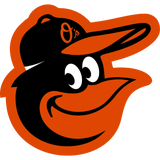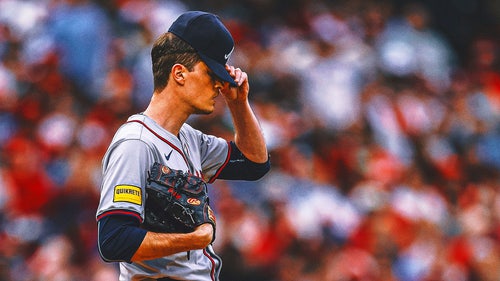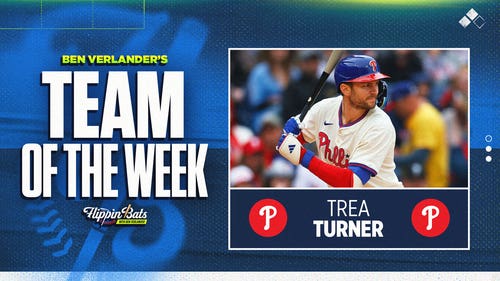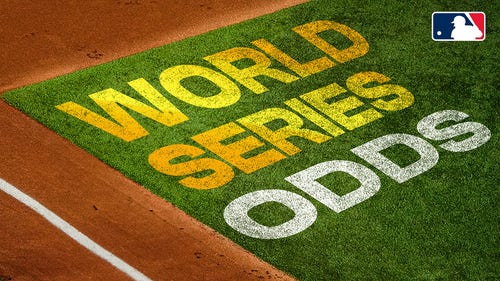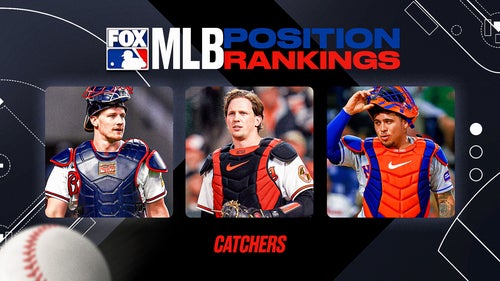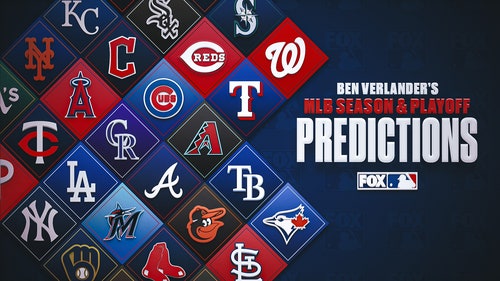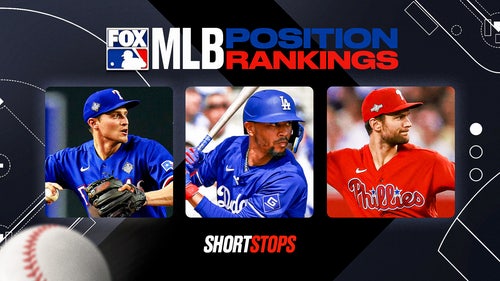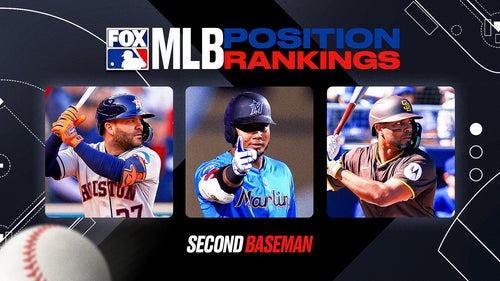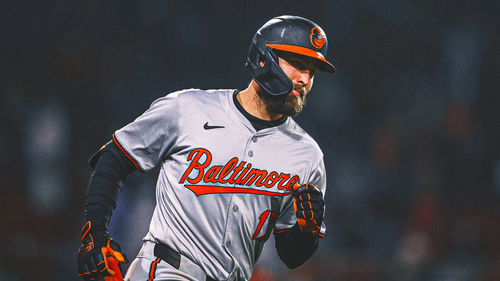
2017 MLB Mock Draft, Version 3.1
Bruce Thorson-USA TODAY Sports
With the draft just over one month away, a third look at the upcoming MLB draft is in order.
Before we get started with this MLB mock draft, a few things:
– These are the selections of the writer, based on discussions with scouts and team officials in the game. However, they are not to be viewed as a prediction, but an idea of the direction a team could go in the given scenario presented.
– Players moving up or down is not necessarily an indication of a player's stock rising or falling. The player is assigned based on a fit, and sometimes that can mean a player moves 10 or more spots in the draft.
1. Minnesota Twins
1
Kyle Wright
RHP, Vanderbilt University
While he wasn't a big prospect out of high school, going undrafted, Vanderbilt knew what they had, featuring Wright out of the bullpen as a freshman before moving him into the rotation as a sophomore. Projected as the top college arm coming into the season after an elite summer with USA Baseball, Wright struggled initially as he seemed eager to show more velocity to scouts early in the season and struggled to control his electric stuff. Wright is at his best when he's working 92-95 and touching 96-97, using his moving fastball to set up his top-shelf off speed stuff, including a slider and curve that are both plus-level pitches. Wright rarely uses his change, but it's considered a plus level pitch as well when he has used it, showing good feel on the pitch and excellent movement. Wright's frame and projectable stuff will allow the Twins to feel comfortable making him the first overall selection.
2. Cincinnati Reds
2
Brendan McKay
1B/LHP, University of Louisville
This would be the ideal situation for the Reds as McKay is definitely the guy they covet. There is mixed opinion on whether scouts prefer McKay as a hitter or pitcher more, likewise whether the Reds would prefer McKay as a hitter or pitcher. McKay on the mound works around 90 MPH max velocity, but he does have excellent feel for his pitches and has the ability to manipulate pitches well, as evidenced by how quickly he picked up a cutter in season this year. At the plate, he's flashed big power (4 home runs against Eastern Kentucky in one game this year) and also has very good bat control that would project along the lines of a solid average, 20-25 home run power type with a bit more power projection possible once he focused solely on hitting. Whether he'll be forced by the Reds to hit or pitch or allowed to continue doing both would be a very intriguing thing to follow.
3. San Diego Padres
3
Hunter Greene
RHP/SS, Notre Dame HS (CA)
The Padres would do back flips to have Greene fall to them. He's a local prospect, and while many have him ranked as the top prospect in the draft, Greene is a great off-field prospect as well, with exceptional academics and volunteer efforts to his resume. Greene has legit plus to plus-plus power as a hitter along with a fastball that can reach triple digits. Concerns about the true quality of his off speed offerings have led to some concerns about taking Greene #1 overall, though many believe he could be a legit option at #1 if he was being selected as a shortstop as well, though his future defensive home would most likely be third base or an outfield corner.
4. Tampa Bay Rays
4
Austin Beck
OF, North Davidson HS (NC)
The Rays would really like to get one of the three above. Given those three off the board, the team would have an interesting decision that there are split reports on who they truly favor most. Some have said that the team is split on which North Carolina prep they prefer between Beck or Gore. Beck has had plenty of Rays presence at his spring games, and he would fit the teams' recent focus on extreme ceiling. Beck shredded his knee during his junior season and missed the showcase circuit, but used the time rehabbing to strengthen his frame along with natural strength growth, taking him from a speed-focused lanky center fielder to a legit 5-tool threat. Beck has some concern about his hit tool, but his plus arm, plus speed, and plus bat speed could lead to a very impactful profile that could stick in center field.
5. Atlanta Braves
5
Jordon Adell
OF, Ballard HS (KY)
Adell's been a guy known by scouts for some time, but that has been a blessing and a curse for Adell. In Adell's regular season play in Kentucky and his first go-round on the summer showcase circuit as one of the few players between his sophomore and junior seasons invited to summer All-Star events, Adell had shown near-elite strike zone judgement. This past summer, he struck out more than had been seen previously, and suddenly reports were out that Adell had "swing and miss issues." Adell this season has over 20 home runs while not yet striking out double-digit times on the season. Adell would be an elite raw prospect off the mound, able to touch 95-97 (depending on your report) with a good breaking pitch, but his excellent power and speed projection will keep his future as an outfielder. The Braves will be likely deciding among a group of about a dozen players, including Beck, Adell, Gore, Lewis, Baz, and Carlson for their pick.Next: Picks 6-10
6. Oakland Athletics
6
Alex Faedo
RHP, University of Florida
On a staff that included four early draft picks last season, a very good argument could be made that Faedo was the best pitcher on the Florida staff. The Friday night starter on that elite staff, Faedo then enjoyed a very productive summer with the USA Collegiate National Team. Faedo had surgery in the fall on his knees that isn't significant, but it did slow his start to 2017. Faedo's picked it up as the season has wore on, and with a strong finish to the season, this placement will seem very normal. Ironically, the A's picked Faedo's teammate A.J. Puk with the exact same draft slot last season.
7. Arizona Diamondbacks
7
MacKenzie Gore
LHP, Whiteville HS (NC)
Gore is a guy who wasn't as highly touted after showcase season simply due to his velocity sitting more 85-88 and touching 90-91 with his elite control. As Gore has filled in since the summer, he's now sitting 88-92 and touching 93-95. Gore's impressive athleticism allows him to have good feel for new grips and new pitches, and he's noted for being able to manipulate his four pitches in multiple ways on each individual pitch, giving him dozens of looks to keep hitters off guard. The Diamondbacks love high end athleticism, and while Gore's funky delivery could cause double takes, he keeps his body in good position for repeating his release point and holding his stuff deep into a game.
8. Philadelphia Phillies
8
Royce Lewis
IF/OF, JSerra Catholic HS (CA)
Philadelphia could go for the most elite arm in this spot, but it'd be hard to pass on Lewis at this point in the draft if he was still on the board. Coming into the spring, most had Lewis as a sure-fire top-5 pick. He has the incredible speed and instincts to work up the middle defensively, though there are some questions whether he could handle shortstop as a professional, certainly profiling as a second baseman or center fielder, however. Lewis has shown very good bat control in showcase, though he's struggled this spring, leading to some thought that he may fall a bit in the draft. He does have plus raw power and double-plus speed. The Phillies would covet his ceiling in their development system.
9. Milwaukee Brewers
9
Shane Baz
RHP, Concordia Lutheran HS (TX)
Stop me if you've heard this one before – Texan prep pitcher has a big fastball. Baz has been jumping up boards this spring as he's shown that the elite velocity he flashed in showcases last summer is able to be sustained deep into a start. Baz has also shown more separation between his slurvy slider and his more direct 12-to-6 curve. Baz is a very good athlete and has the ability to play both ways with big right-handed power, but teams selecting him will be taking him off the mound, and the Brewers would be overjoyed to have him at this point.
10. Los Angeles Angels
10
Nick Pratto
1B, Huntington Beach HS (CA)
After taking Matt Thaiss and moving him to first base, many will wonder why the Angels would then use a second consecutive first round selection on a first baseman. The primary reason that Pratto was a first baseman was that his team wanted to protect him physically from injury due to his value to his high school team on the mound. Pratto won't be worrying about time on the mound as a pro, however. He has arguably the absolute best pure hit tool in the entire draft class. His contact ability is something many teams have been in love with early on in the draft, which could lead to him ending up top 10, but his lack of defensive experience anywhere but first base could lead to Pratto falling down the board a bit as well. His arm and natural athleticism could certainly play in a corner outfield spot, though he is a very highly regarded defender at first base. Pratto does have legit power as well, and he seems to draw comparisons to a pair of Reds first basemen, Sean Casey and Joey Votto.Next: Picks 11-15
11. Chicago White Sox
11
Jeren Kendall
OF, Vanderbilt University
Death, taxes, and the White Sox selecting a toolsy outfielder early in the draft. Those are things we can all count on. Kendall was considered with teammate Wright as the top pitcher and hitter in the collegiate class coming into the 2017 season, and it is feasible that they're both the first off the board as hitter and pitcher, but both have seen their values affected significantly this spring. Kendall has hit well this spring if you look at his power and speed numbers, but he has struggled with strike zone judgement, and the connection between his upper and lower half in his swing is not where it needs to be to have the bat control to improve his strike zone judgement right now. Kendall has elite raw tools across the board, with plus raw power and plus-plus raw speed.
12. Pittsburgh Pirates
12
Pavin Smith
1B, University of Virginia
It would surprise nearly no one within "the industry" if Smith is long gone by this point, and yet he could also fall a few more picks. Such is the volatility of the college first baseman in the modern draft. Without heavy experience in the outfield, teams will struggle to project him in a corner outfield role, and modern college first basemen have had a very mixed track record, even ones with Smith's elite hit tool. Smith does have the best pure hit tool in the draft, however, and it would not be surprising if he ends up the target of a team even in the top 5 due to his excellent eye and controlled swing. Within the Pirates system, Smith would find himself able to move quickly to challenge for the first base job at the big league level.
13. Miami Marlins
13
Sam Carlson
RHP, Burnsville HS (MN)
Carlson is the guy who could have an Ian Anderson-like rise this season, moving from a ranking around 15 coming into the draft to being a top-5 selection for someone, so for the Marlins to get him here would be a great get for Miami. Carlson is a typical cold-weather arm that has developed slow but steady. He went from throwing low-90s with very good control and multiple ways he can manipulate his off speed pitches to a guy sitting mid-90s and touching 96-97. He has still shown his elite control and especially the incredible feel for his change, beyond a typical high school arm.
14. Kansas City Royals
14
J.B. Bukauskas
RHP, University of North Carolina
Very possibly the best-performing collegiate arm this spring, Bukauskas has concerns regarding his small stature being able to hold up as a starter. Of course teams only have to look to starters like Marcus Stroman and Johnny Cueto currently and Pedro Martinez historically to see how a hard throwing pitcher that is short in stature could be successful. Bukauskas has arguably the best slider in the entire draft class with tremendous break and excellent velocity along with a fastball that sits 95-97 and a feel for a change. Pairing Bukauskas with fireballer Josh Staumont already in their system could give the Royals an elite 1-2 punch.
15. Houston Astros
15
Trevor Rogers
LHP, Carlsbad HS (NM)
One of the current risers in the draft, Rogers has the ideal size you'd want in a projectable pitcher at 6'6″ and 185 pounds. He is one of the older pitchers in the class, and he was initially projected much lower due to that and the lack of true refinement in his pitches, but he's come out this spring after a very good showing in the summer showcases to put up easy 95 on his fastball with a repeatable delivery from his tall frame, something not exactly common from a tall high school arm, especially a lefty. His slider has been showing two looks, one with a sharp, distinct break, and the other more of a sweeping style, akin to what Andrew Miller threw throughout the playoffs last year. His low three-quarters arm slot hides the ball from righties while keeping lefties off of his slider. A team with good feel for his ability to develop the change could jump on him, and a team like the Astros could allow him the time to develop in their system with cases like his doing well previously in their system.Next: Picks 16-20
16. New York Yankees
16
Bubba Thompson
OF, McGill-Thoolen Catholic HS (AL)
Thompson was a true two-sport elite talent, backing out of his Auburn commitment to pursue schools that would allow him to play both football and baseball as a quarterback that accounted for over 40 touchdowns in his senior season on the gridiron along with an elite skills outfielder that has big time speed and an athletic body with quick twitch that can turn on a ball in a hurry, projecting to plus power. The Yankees have been going hard after the best available talent each year recently with big upside, and after getting Blake Rutherford last year, they'd go to the outfield well again to get a raw player that could end up even better than Rutherford in the end.
17. Seattle Mariners
17
Adam Haseley
OF, University of Virginia
Considered a question whether he'd be more valuable to a team as a pitcher or outfielder coming into the season, Haseley has performed so well that many have stated that he should be the first college hitter to come off the board. With his solid arm, his move to a corner outfield spot should be something he handles well, and his power should play well on a corner as well for the Mariners.
18. Detroit Tigers
18
Griffin Canning
RHP, University of California at Los Angeles
Canning reminds many of former Tigers hurler Rick Porcello with a fastball that batters seem to screw into the ground over and over and a three-pitch off speed collection that keeps hitters honest as well. Canning has been jumping up draft boards with a tremendous performance this spring that has secured his future as a starter. While he may not project as a front-line starter, he's got a very high floor that should allow him to move quickly to the Tigers rotation.
19. San Francisco Giants
19
DL Hall
LHP, Valdosta HS (GA)
Hall gained noteriety in the summer showcase circuit as he plowed through hitters with ease with a curve ball that had some scouts bold enough to put a future value of 70 on the pitch. Hall sits 92-95 and can touch 96-97 with his fastball, but he does struggle at times with command of the pitch and his change. He's had some inconsistency in command this spring that has dropped him from a probable top 10 selection. While Hall is a bit old for the high school class, none of that will deter the Giants if he makes it this far.
20. New York Mets
20
David Peterson
LHP, University of Oregon
If you're looking at the statistics of this collegiate season, it may seem absurd that Peterson would be the 20th selection of the draft. He's been absolutely dominant in 2017 after two solid seasons in his first two years. Peterson has filled out his 6'6″ frame over his collegiate career and now offers a fastball that can touch mid-90s and has a ton of life. Peterson's easy delivery features just a tick of deception, which allows his slider and curve to both play up, and his change is reportedly an elite pitch, but is rarely needed at this point. Peterson can locate all his pitches well, keeping hitters off base and seems to get either a weak grounder or strikeout with every batter. The Mets would likely be seeing Peterson move quickly after getting him here.Next: Picks 21-25
21. Baltimore Orioles
21
Logan Warmoth
SS, University of North Carolina
The connection between the Orioles and Warmoth has been strong throughout the spring, and this is probably his floor as he'll certainly be an Oriole if he's on the board, but Warmoth's balance of tools across the board could entice a team ahead of this spot to take a shot on him in a middle infield class without many guys who will likely stay up the middle on the dirt. Warmoth is a sabermetric darling offensively, with good strike zone judgement and gap power, but not a ton of home run power or stolen bases that would light up a stat sheet. He's a high-floor player that will likely have a big league future, but whether that's as a reserve infielder, a low-division starter, or a Dustin Pedroia-type offensive performer eventually is what remains to be seen in his development.
22. Toronto Blue Jays
22
Keston Hiura
IF/OF, University of California at Irvine
A team with sabermetric focus and multiple early picks will certainly nab Hiura, even with the likely Tommy John surgery in his horizon once he's drafted. Most likely his floor will be 30th overall as it is rumored that he is beloved by the Chicago Cubs. Hiura has a profile very similar to the Cubs' Ian Happ, though he has more contact than power, though his power is nothing to slack about. The Blue Jays would be a team that could work well to ease him back into defense and enjoy the benefits of his bat in the meantime.
23. Los Angeles Dodgers
23
Blayne Enlow
RHP, St. Amant HS (LA)
Enlow is a high-variance pitcher, with some teams really liking his stuff, but some teams scared he could end up requiring more than slot to pull him away from his LSU commitment. That won't scare away the Dodgers in this spot, as they have the pitcher whose curve draws the most comparisons to Enlow's excellent curveball in their ace. His velocity was down early in the spring, but has ticked back up recently, which could help to drive him back up into the first round even beyond this spot, but the Dodgers could certainly pull the trigger on Enlow with his advanced command of a fastball that sits low 90s and touches 95 with a curve that has incredible spin, but that he also knows how to adjust the spin on in order to get different looks for his curve. Maturity on the mound like that will give a team like the Dodgers a lot of comfort in giving him the money to pull him away from his college commitment.
24. Boston Red Sox
24
Alex Lange
RHP, Louisiana State University
Last season, the Red Sox jumped on a highly regarded arm in the first round that was falling due to off field concerns. This would be the case of the Red Sox grabbing a guy who has seen his stock drop due to inconsistent performance and getting an elite pitcher lower than his talent should be in the draft. Lange has a dominating fastball/curve combination when he's on with both, but that's been tough to see this year with LSU. Interestingly, the most consistent pitch for Lange this spring has really been his change, which has been his third pitch his first two seasons, but has been showing good fade and location all season, even when he's struggled to locate his other two pitches.
25. Washington Nationals
25
Brendon Little
LHP, State Junior College of Florida
Little has elite stuff that had him rated in the top 200 coming out of high school, but after not getting the work he wanted with North Carolina, he transferred to JuCo to get drafted sooner. He did have experience pitching in the Cape Cod League against top college competition, and he performed very well, flashing his mid-90s fastball and sharp curve. Little does have some issues with consistency in his delivery, and that has led to issues with his command. When he's on, there are few in this draft class with more dominating stuff from the left side, but he will need to work on that delivery. Little does get very high marks for his willingness to take coaching and has made big strides already since high school, so pro teams will be excited to land his talent in the draft. The Nationals emptied their system's top end pitching in trades this offseason, and this would give a quick fill of talent that could possibly move quick once things click in Little's delivery.Next: Picks 26-30
26. Texas Rangers
26
Heliot Ramos
OF, Leadership Christian Academy HS (PR)
If there is a guy that is hardest to peg in the first round, Ramos would be among that group, as he is viewed as one of the best overall prospects in the draft by some clubs and viewed as much too raw by others. He'll be one of the youngest players in this draft class. Ramos has legit plus to plus-plus raw power that he displayed in showcase home run derbies and BP but was inconsistent in game action. Ramos has the raw tools to be an elite right field profile with a legit 70-grade arm fromt he outfield, plenty of athleticism to handle the position well defensively, but some very raw skills at the plate. He fits well in the high ceiling, big tools sort of player that the Rangers tend to target early in the draft.
27. Chicago Cubs
27
Nick Allen
SS, Francis Parker School (CA)
Very feasibly the most likely guy that will be picked in the first round to stay at the shortstop position, Allen is not just a good shortstop, he has what one scout termed, "major league glove skills" already as a high school shortstop. The difficulty will be for a team to allow his bat to develop as his glove will be so advanced along the way to encourage a push forward. The Cubs will have that sort of flexibility with one of the young superstars at the SS position in the major leagues in their organization in Addison Russell. Allen has diminiuitive size, with his 5'8″, 155-pound listing looking generous on both numbers, but it's not held him back from playing elite defense. Allen has a quick, short stroke at the plate that would portend a contact-driven approach at the plate, using his speed and excellent hand-eye skills to get on base at a high rate. However, in BP and flashing in game, Allen has shown some raw above-average power that has led some to project him to a 7-10 home run, 30+ double future.
28. Toronto Blue Jays
28
Matt Sauer
RHP, Ernest Righetti HS (CA)
A lean 6'4″ on the showcase circuit last summer, Sauer was sitting right around 90 with his fastball. He came out this spring firing bullets, and he's jumped up boards in part due to that and also due to his other stuff continuing to play well with the added velocity. There is some concern with Sauer's arm slot being tough for him to repeat over a full season, but with his natural strength added this past winter, Sauer has the opportunity to be a guy who ends up one of the elite performers from this class while being picked late in the first round rather than among the first 10 selections.
29. Texas Rangers
29
Seth Romero
LHP, University of Houston
Are we drafting based purely on talent? Then Romero is off the board in the top 5. Are we drafting based on intangibles? Then Romero may not be picked. A talent that rated in the top 10-15 in the entire draft even with off-field stuff before this season, Romero will likely end up coming off the board to someone with multiple first round picks toward the end of the first round. Romero has a fastball that can touch 96-97 and sits just a couple ticks lower with a slider and a change that are behind the fastball. Romero has not faced a ton of work this spring, so he could end up seeing significant work this summer once he's drafted.
30. Chicago Cubs
30
Mark Vientos
3B, American Heritage HS (FL)
Vientos has been viewed early on as one of the big time bats in the 2017 prep draft class, but early spring issues with contact dropped him back in the class. The Cubs would gobble up his upside this deep into the first round. Vientos has youth on his side as a 17 year old that won't turn 18 until December, but his true upside comes from his ability to not just make contact at an elite level when he's going well, but to make that contact with the good part of the bat, consistently barreling balls and driving them with authority. Many have compared Vientos to Manny Machado in his offensive profile. Vientos won't be at Machado's level defensively, but the move to third should allow him to profile as more of a plus defender as well.Next: Picks 31-36
31. Tampa Bay Rays
31
Jake Burger
3B, Missouri State University
Burger is a guy who could go in the top 15 or could end up slipping to the back of the first round depending on how a team views his long-term abilities at the hot corner. What there's no doubt on is his legit power, which has been considered as much as plus-plus raw power. Burger's not just a raw hacker, either, with very good zone recognition and the ability to handle both elite velocity and strong breaking stuff. Burger does have a very solid arm, so he could end up working in an outfield corner for a time, but his run tool is certainly below average, so likely as he ages, he'll be forced to 1B or DH. His power would be certainly welcome into the Rays system.
32. Cincinnati Reds
32
Drew Waters
OF, Etowah HS (GA)
Last season, the Reds took one of the most safe picks in the draft in Nick Senzel and then took a toolsy Georgia prep outfielder in Taylor Trammell. This would be a repeat of the same process, getting McKay and then grabbing Waters. Typically, the Georgia outfield crop is a deep crop that is dotting the first few rounds, but Waters is one of few this year that will be in consideration early, but it's not due to lack of competition that he is standing out. He is a switch-hitter that able to generate raw plus power and flashed plus power in game as well this spring along with very good timed home to first numbers, though his game speed seems more plus than his timed numbers show. Waters gets good marks for his on-field maturity, with good baseball field in the outfield and the likely ability to handle center field for a while even as he fills into his body.
33. Oakland Athletics
33
Tristen Lutz
OF, Martin HS (TX)
Lutz has been getting a lot of notice late in the process here as his power has really began to stand out among the prep class. While many have flashed plus raw power in batting practice, Lutz has been showing steady plus power in game this spring and flashing true double-plus power. He has a right field profile with an ability to track balls well with above-average speed on top of his big power. He does have some contact concern in his swing, but the power is completely legit, and the Athletics could take a gamble here on his big booming bat.
34. Milwaukee Brewers
34
Tanner Houck
RHP, University of Missouri
Coming into 2017, Houck was regarded as one of the best draft prospects. He was part of the USA Baseball Collegiate National Team the last two years and showed very well both years. Houck did struggle early in the season, but as the winter turned to spring, his stuff ticked back up to its usual levels, and he has shown his excellent mid-90s fastball with incredible sink and movement. Houck has shown good feel for locating his slider and change even when they aren't getting the best results. While he's primarily a sinker ball pitcher, Houck has a high floor as a guy who should profile as an inning-eating rotation member in his future, and that would balance well for the Brewers with their high ceiling selection of Baz earlier in the round.
35. Minnesota Twins
35
Hagen Danner
RHP/C, Huntington Beach HS (CA)
Danner has been on the radar nationally for a long time as he was a Little League star, played for a very well-known high school program, starred for the USA National Team, and has performed well at showcases and tournaments throughout the process. However, his true destination on the diamond is what has led to the debate about where his draft slot would be. Danner is a guy who can show a 95 MPH fastball with a tight curveball off the mound along with a change that shows promise. At the plate, he has plus raw power, but more of an average contact ability. Danner was worked out in the infield this spring at times, and he could profile very well as a third baseman as well. Whether the Twins would profile Danner as a pitcher, catcher, or infielder isn't known, but his level of talent would be difficult to pass at this point of the draft.
36. Miami Marlins
36
Luke Heimlich
LHP, Oregon State University
What do you think? Agree? Disagree? Drop a note in the comments!
More from Call to the Pen
This article originally appeared on
